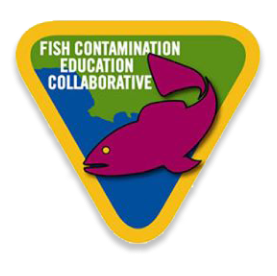Mislabeled Seafood: A Danger for People and the Environment
 Have you ever bought fish from a market or restaurant? Even though the fish may be labeled on the package or the menu, how do you know you’re getting what it says?
Have you ever bought fish from a market or restaurant? Even though the fish may be labeled on the package or the menu, how do you know you’re getting what it says?
According to Oceana, an ocean advocacy organization, seafood is one of the most popular foods in the United States, but consumers are often not given information about where their seafood comes from.
Santa Monica Seafood reported in a blog post that last year, in the state of Florida alone, 186 restaurants were cited for mislabeling fish. In February, NOAA reported that two Arizona residents pleaded guilty to 13 felony offenses for purchasing and re-selling illegally imported Vietnamese catfish and Lake Victoria perch as grouper, sole or snapper.
In fact, recent studies have shown that seafood may be mislabeled as often as 25 to 70 percent of the time for fish like red snapper, Atlantic cod and wild salmon.
Seafood mislabeling is definitely a growing problem, and it harms people and the environment for many reasons.
Image via Let Ideas Compete on Flickr
Sustainability
If you’re using Seafood Watch’s guide to purchase sustainably farmed or caught fish, there is still a chance of consuming an endangered species. Marc from The Ethicurean thinks it’s possible that diners who are ordering yellowfin tuna may be served the ‘red-listed’ bluefin tuna, instead.
Many markets also abundantly sell red snapper, a highly endangered species. This isn’t because fisheries are catching the fish; a report in Nature finds that fish counters are actually stocking a variety of species as red snapper. By making it seem that the supply of red snapper is plentiful, markets are not communicating to the public that this fish’s population is in dire condition.
Health
The two Arizona residents who relabeled Vietnamese catfish and Lake Victoria perch inadvertently introduced health risks to the American public. Substances called malachite green and Enrofloxin were found in the illegally imported fish; both of these are considered health hazards and prohibited from being used in U.S. food products.
Money
Santa Monica Seafood also suggests a financial reason for seafood mislabeling: some restaurant owners, chefs and managers may make a conscious decision to mislabel cheaper species for more expensive ones. Food prices continue to rise, tempting some vendors to fraud the consumer and save some money.
So, that pound of grouper you burnt a hole in the pocket for may actually be tilapia in disguise.
Protect Yourself from Seafood Mislabeling
What can you do to reduce the chance of bringing home mislabeled seafood?
 1. Know your seafood – Santa Monica Seafood encourages you to familiarize yourself with the different fish in the sea. Work with fishermen and trusted suppliers to learn how to tell the difference between species–even when they’re filleted.
1. Know your seafood – Santa Monica Seafood encourages you to familiarize yourself with the different fish in the sea. Work with fishermen and trusted suppliers to learn how to tell the difference between species–even when they’re filleted.
2. Be wary of low prices – Is that chunk of sole unusually cheap? The South Florida Sun Sentinel warns that you may be buying mislabeled seafood if its price is significantly lower than average.
3. Stick to seafood with sustainable labels – Voluntary certification programs exist that ensure seafood under their labels are accurately named and sustainably farmed or harvested. Get started with sustainable labels by reading our post on Whole Foods Market and its easy-to-understand system.
The seafood industry can be tricky to navigate, but by staying informed, you can make sure that you’re buying fish that are good for the environment and your health.
For more information about seafood mislabeling in the industry and its effects on people, the environment and the economy, read Oceana’s latest report: “Bait and Switch: How Seafood Fraud Hurts Our Oceans, Our Wallets and Our Health”
Have you ever come across mislabeled seafood? Tell us about it by commenting below.
Image via Island Vittles on Flickr

